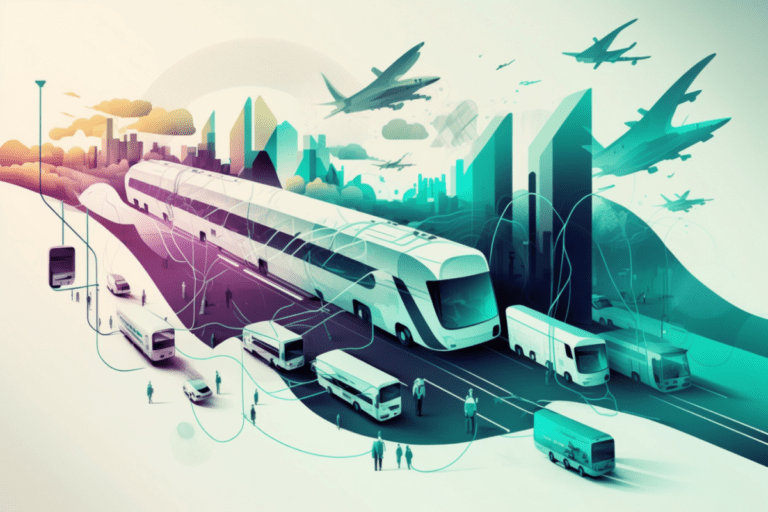The new JRC report “Research and Innovation in Transport Safety and Resilience in Europe” charts European innovation efforts to achieve this goal and identifies key areas to focus on, such as human factors, cybersecurity and climate-resilient infrastructure.
The study highlights road transport as one of the areas most in need of progress, due to the large number of avoidable accidents that continue to occur in Europe. According to researchers, enhancing safety culture, maintaining human alertness and performance, designing and maintaining safe infrastructure, automation and assisted driving are some of the interventions that can make our roads safer.
Planes, trains and boats are showing excellent results with lower fatalities, but similar to road transport, digitalization and automation will help maintain this track record in the future.
The report draws its conclusions from a selection of the most relevant projects for EU funding, identified through the Transport Research and Innovation Monitoring and Information System (TRIMIS) database. This publication is a guide showcasing how research and innovation are shaping the future of transport safety and resilience in Europe.
Road transport
Research and innovation have been vital in addressing safety challenges across different modes of transportation. In fact, while the latest data indicates that more than 20,000 people were killed in road accidents in 2022, this trend has decreased by 10% compared to 2019. The total number of deaths in 2021 was 40% lower than the number of deaths deaths recorded in The beginning of the twenty-first century.
Of the 143 EU-funded projects selected for analysis, 48 focus on road transport and adopting a safe system approach that combines technological innovations, non-technological measures and behavioral adaptation. Specifically, areas of interventions that have been identified to reduce the likelihood of road accidents include infrastructure, with the design and maintenance of hard roads, and safe vehicle technologies, such as driver assistance systems.
Among the proposed initiatives, the report indicates the use of computer vision supported by artificial intelligence to detect dangerous traffic situations, alert drivers, and take evasive actions. This can help ensure drivers are able to operate vehicles by detecting any distractions, fatigue or obstructing substances.
All these measures show promise in achieving the goal of reaching almost zero deaths and serious injuries on EU roads by 2050. This goal is set in the framework of the EU Road Safety Policy 2021-2030 – next steps towards “Vision Zero” and includes The average target is a 50% reduction by 2030.
Aviation, railway and sea transport
The report also highlights the impressive safety record of aviation, rail and water transport. With no fatal accidents involving commercial aircraft in the European Union since 2016, aviation is setting new standards for safety despite rising air traffic. Ongoing efforts in aviation are focusing on AI-enabled navigation, air traffic management, safety nets, and airport operations to ensure risk-free travel.
Likewise, the railway sector has made great strides in safety, with the number of accidents decreasing by 38% compared to 2010, primarily by prioritizing infrastructure safety and security. For maritime transport, innovative projects address the root causes of accidents, with the aim of eliminating human error as a major factor. Detection and warning systems are being developed, in addition to smart safety equipment and procedures to protect passengers and crew members.
Transport flexibility in the face of natural and man-made crises
Crises such as the COVID-19 pandemic and the Russian war in Ukraine highlight the importance and fragility of transportation systems when they face large-scale disruptions.
As the EU transport system will face challenges due to climate events and other natural or man-made disturbances, various policy measures have been put in place to strengthen its resilience, ensure the continuity of its services, protect passengers and freight and enhance the cybersecurity of transport networks. .
These measures include completing the Single European Transport Area, with a focus on the Trans-European Transport Network (TEN-T) to ensure multimodality and interoperability; and the Transport Emergency Plan, which provides guidance to Member States in areas such as connectivity, passenger protection and efficient border management in times of crisis.
However, resilience remains a major challenge for the EU transport system, given its complexity and interconnectedness to meet demand, efficiency and sustainability objectives, as well as the potential increase in disruptions. In fact, 50 of the EU-funded projects analyzed in this report focus on developing advanced monitoring technologies to identify vulnerabilities and facilitate maintenance, detect and predict disruptions through ICT and AI technologies, and create frameworks that take into account factors such as risk assessment And the effect. Analyze and allocate resources to make informed decisions during disruptions.
The research directions identified by the study converge towards operational resilience at ship and network levels, developing resilient physical and digital infrastructure, ensuring fleet resilience and addressing critical infrastructure resilience and cybersecurity. The flexibility of urban mobility is also a critical aspect, necessitating collaboration, knowledge management and monitoring of the entire transportation system for real-time information.
The report concludes that several key areas should be considered for future research and policy initiatives, including resilience design and certification for structural resilience coverage (e.g. refractory materials); Virtual testing to simulate systems’ response to disturbances, measures needed to maintain and restore operations when pilot study is impractical, and monitor resilience and response based on data and artificial intelligence.
Two policy briefs complement this report:





